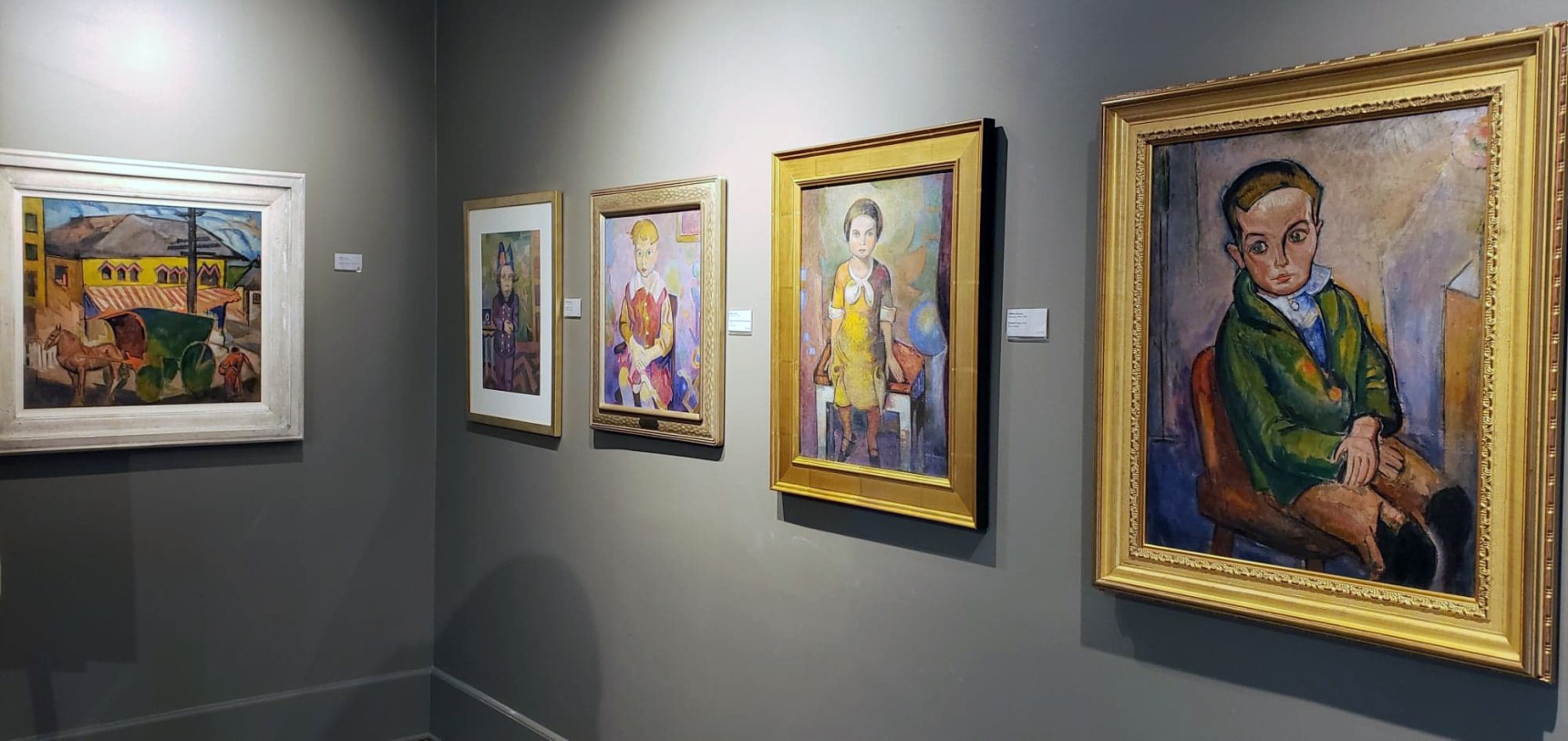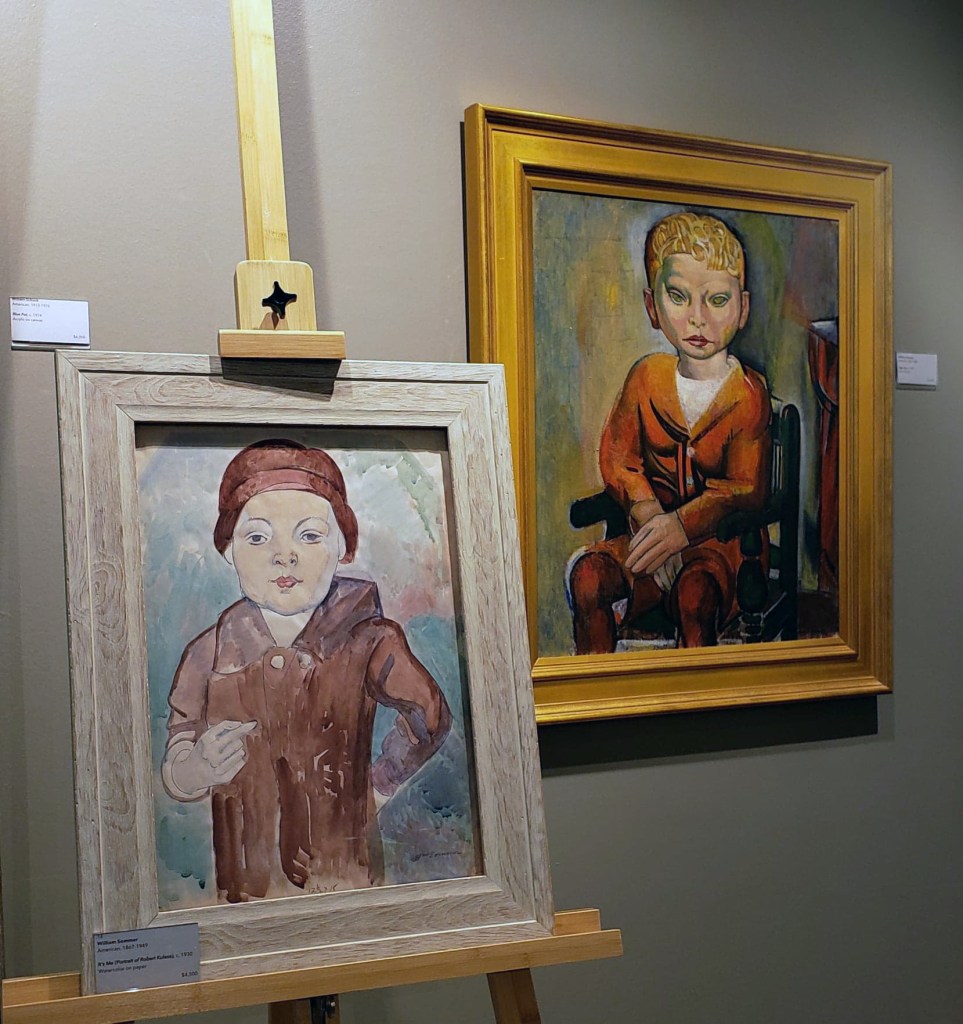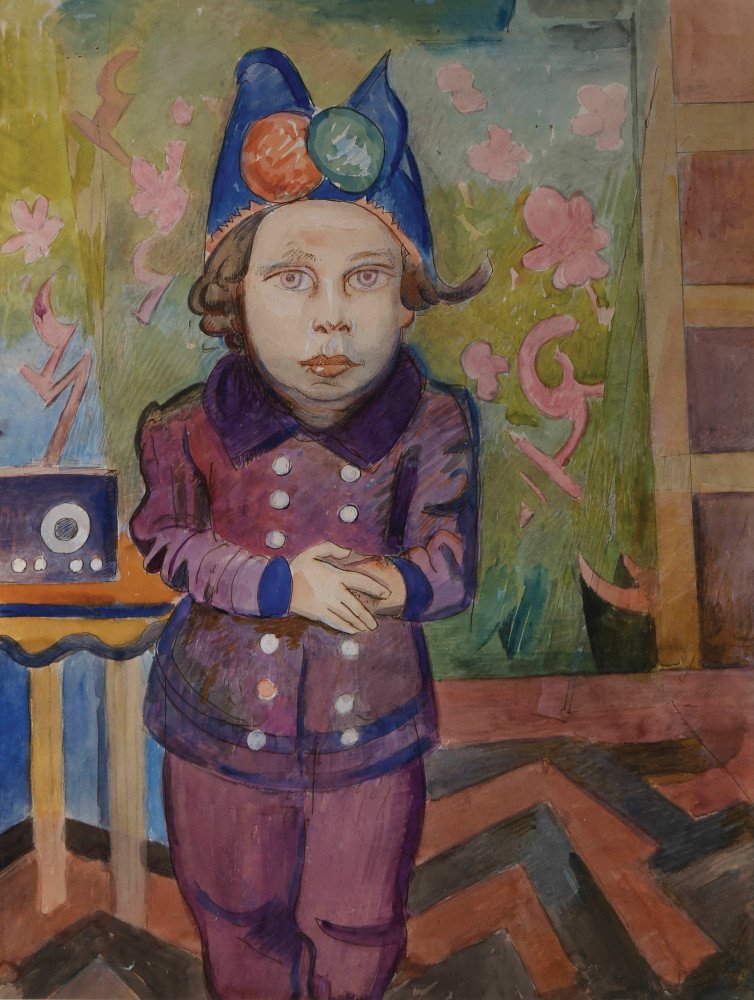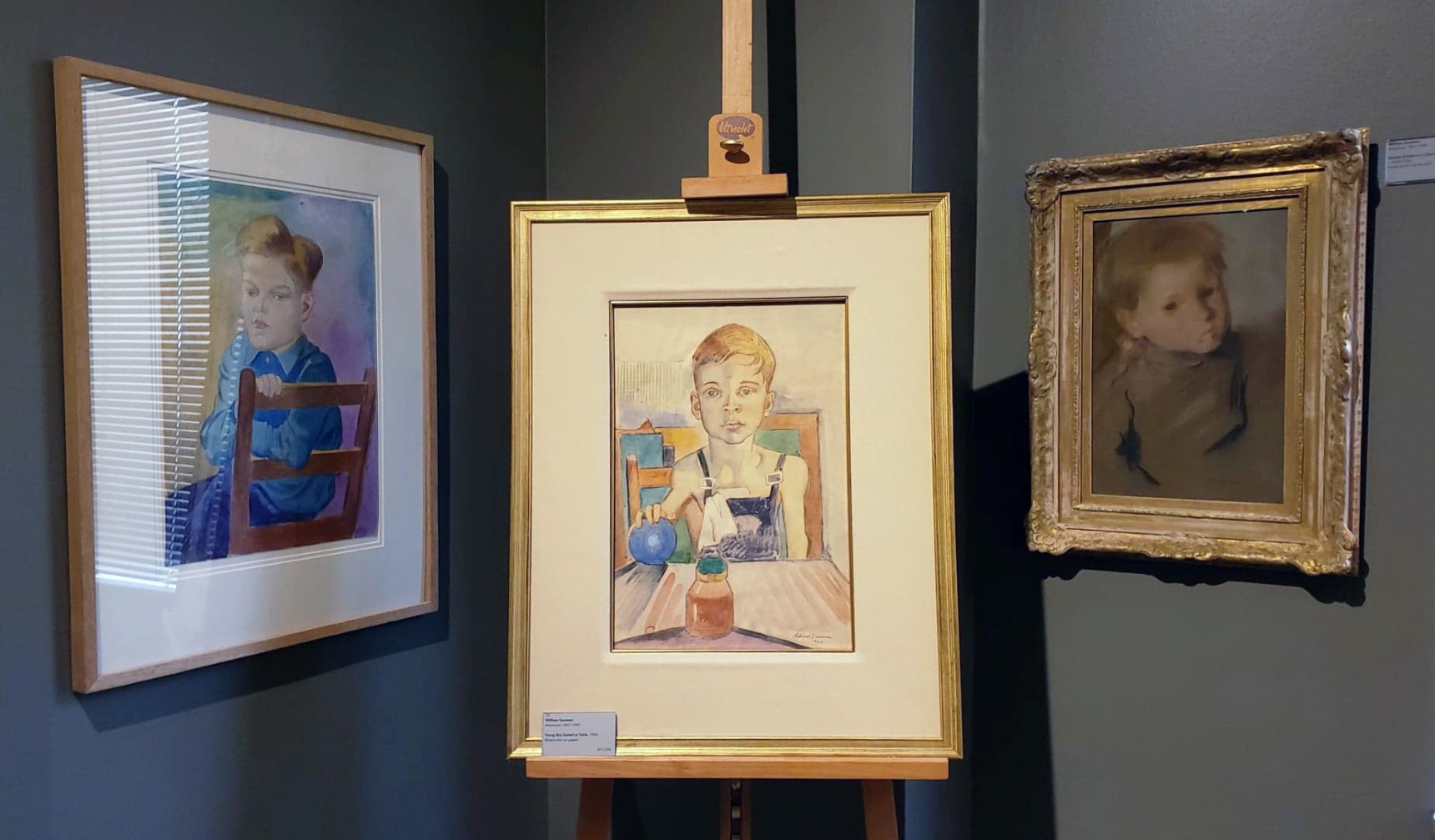
Wolfs Gallery’s new location is a bit off the beaten track in a commercial/industrial park in Beachwood, but it is worth the visit. It was a treat to walk through the expansive space of multiple connected galleries filled with historic and contemporary art from Cleveland and beyond. Currently, their feature exhibition focusses on portraits of children by William Sommer (1867-1949) that fills the first two gallery spaces and spills into other Cleveland School displays. This exhibition is primarily organized around the collection of Martin Lerner, the foremost scholar of Sommer’s work. Lerner wrote in the accompanying exhibition catalogue essay that these portraits of children “stand apart from anything else produced in America during the first half of the 20th century.”

When entering the gallery, I was overwhelmed with the sheer quantity of Sommer’s paintings on display. I couldn’t help but hear Whitney Houston’s lyrics, “Children are our future” in my head as I wandered through Sommer’s modernist portraits thinking about the tumultuous times these children had experienced. The children Sommer painted were raised during the Great Depression and witnessed vast and rapid changes in technology as electricity entered rural Ohio homes in the 1930s. In several paintings, you can spy an electric light or even a radio. They also witnessed changes in American culture as unemployment soared and the Works Progress Administration was established to help employ artists like Sommer by commissioning murals and other works of public art.

Rapid change is a theme echoed in how Sommer approached art. Michael Wolf describes the works in the exhibition as being deductive, illustrating Sommer’s ability to adapt and blend modernist ideas to pursue his own artistic goals. The show includes a wide span of works dating from 1903 to about 1943, demonstrating the assimilated influences of academic traditions as well as Impressionist, Fauvist, Cubist, and other movements that melded into his own visual style. Not displayed in any particular order, the exhibition pairs earlier works with later ones, moving back and forth through Sommer’s career. While this might seem an odd choice, it is worth noting that dating Sommer’s art can be difficult as the artist didn’t keep records or date his paintings when he made them. Lerner writes in the catalogue, “…some dates on some pictures bear little resemblance to facts. Sometimes the discrepancy between date of creation and the date on the picture is relatively negligible, perhaps a few years, while at other times, it is off by decades.”

Like today’s workers facing unemployment due to the economy or new technological advances in their industry, Sommer found himself out of his lithography job when newer mechanical printing techniques were developed. While he struggled financially, he turned this misfortune into the opportunity to paint the neighboring children in Brandywine. In William Sommer: Cleveland’s Early Modern Master, Elizabeth McClelland wrote of his portraits that, “The unrealistic expressive color and exaggerated shapes are the lies that tell the truth and prolong the evanescence of childhood.” Through abstractions, Sommer managed to capture the essence of each child’s inner being with features that express a range of emotions including curiosity, mischievousness, joy, boredom, or worry.
The show demonstrates Sommer’s mastery of both oil and watercolor. One would be forgiven for thinking at first glance that Musing Girl (1940), a watercolor, was an oil painting as it hangs in a line of other oils. The rich colors and thick paint application make this one of the more “finished” and detailed watercolor paintings in the exhibition. The softer, rounder facial features of his later portraits are paired with the flat and cubist geometric space of his work from the 1920s showing that Sommer was not afraid to adapt older ideas to create new work. Not interested in realism, but rather capturing the child’s spirit, Sommer wrote that, “The real facts are not there in reality—but the Idea remains and with it he paints and lends the thing the second life.” While often criticized for paintings that did not appear complete, Sommer maintained that his intent was not to focus on detail but rather the spirit of the subject. This gives his work a sense of freshness and immediacy still felt today. Even in his more complex paintings, Sommer started by drawing lines and creating planes of color to create sense of “oneness.”
Peppered throughout this exhibition are paintings of landscapes. While they offer a comparison as to how Sommer applied similar techniques, colors, and styles to other subject matter, I found that this juxtaposition distracted me from the emotional urgency of the children, and the singularly powerful impact imbued into the portraiture. Further back in a gallery surrounded by other Cleveland School artists like Frank Wilcox, two impressive portraits of one of Sommer’s sons from around 1905 and 1908 are displayed on easels. While these paintings would have been interesting to compare the more modernist portraits, this placement puts Sommer’s work in the context of his contemporaries and illustrates that even in the somber palettes of browns and burnt umbers in his early work, he pushed experimentation of technique.
Michael Wolf says that his gallery is a place to come spend some time looking at beautiful objects, and there is plenty worth seeing. Exhibits like Sommer’s Children are particularly impactful and can remind us that our actions today have consequences for the next generation. Sommer had great respect for the youths he painted, often showing them with a maturity that one would not normally associate with children their age. Whether we talk about national deficits, the climate crisis, or responding to a national pandemic, our inactions are forcing our young to respond with even greater maturity. Sommer reminds us of the strength, vulnerability, and wisdom of children, and that we should also pay respect by listening and learning from them. Afterall, “they will lead the way.”
CAN Journal - Christopher L. Richards
